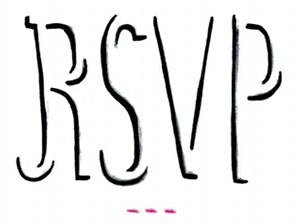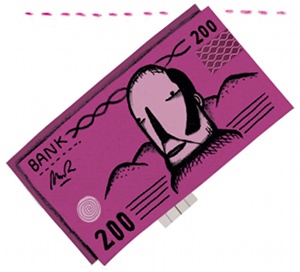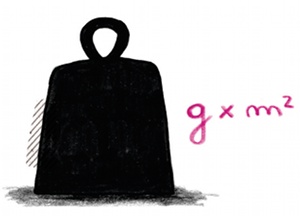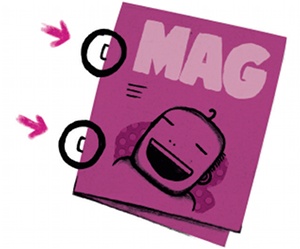Print production glossary
Avoid embarrassing misunderstandings over antique finishes and French folds with our latest collection of vital insider terminology
4pp
Here 'pp' stands for 'printed pages' and refers to the fold used on a sheet of paper. Something at 4pp will usually be a single sheet, folded once to give four pages.
Acid-free paper
Paper that's had the acid removed while still at the pulp stage, in a bid to make it more resistant to age deterioration, and therefore suitable for archival use.
Antique finish
This is the roughest, most 'natural' finish for an offset paper - it has a random, open texture and a good tooth. It's also highly valued in book printing.
AQ coating
Water-based and fast-drying, AQ (or aqueous) coatings are a more economical stand-in for most varnishes.
Archival paper
Any paper chosen for its stability: acid-free, lignin-free and able to hold colour well.
Accordion fold
When a piece of paper is zig-zag folded twice to give six panels, if you count those on the back and the front.

Blind embossing
An embossed image without any ink, foil or other finishes added. The resultant relief image retains the same colour as the paper into which it has been pressed.
Get the Creative Bloq Newsletter
Daily design news, reviews, how-tos and more, as picked by the editors.
Calendaring
Running paper through a pair of heavy rollers during the manufacturing process, to improve both the surface quality and its resistance to ink abrasion.
Caliper
The thickness of paper, measured to the nearest thousandth of an inch.
Case bound
Binding using glue to hold signatures to a case made of binder board covered with fabric, plastic or leather. Hard-backed books are case bound, for example.
Chiri
Literally 'scraps' or 'leftovers', these are the small bits of dark, outer mulberry bark sometimes added into Japanese paper for decoration or to create other effects.
Canadian wire bound
The wire in a Canadian-bound volume is fully concealed by folding the cover back on itself to be bound into the wire.
Coated paper
When a clay, latex or other layer is applied to paper, resulting in lower absorbency, greater reflectivity and sharper images. Coatings can have dull, gloss, matte or more exotic finishes. Uncoated papers don't have these additional layers.

Cotton paper
Paper made with a minimum of 25 per cent cotton fibre. Strong and durable, this is a favourite for producing 'bonded' writing paper and bank notes, for example.
Cut sizes
The smaller sizes of paper, such as A4, derived by cutting down the 'parent' sizes used by commercial printing presses.
Deckle edge
The feathery edge of a paper produced by traditional handmade processes. Not a guarantee of quality, as machine-made papers can emulate this quite easily.
Embossing
When a given shape is punched into the back of a sheet of card, causing a relief image to appear on the front. Debossing indents the image into the surface.
Felt side
Paper has two sides, and they're not the same. The felt side is the better of the two, and so is preferred for printing.
Finish
The feel and texture of any paper. Laid finish is machine-made paper that emulates handmade; embossed finish presses a pattern into the surface of the paper; matte papers have a dull surface well-suited to text - the list goes on.
French fold
A sheet of paper that has been printed on one side, then folded twice to form an uncut four-page section. The top may be folded inside (heads in) or outside (heads out).
Foil blocking
Gold, silver, pigmented and holographic materials applied to printed materials for decorative effect. These are often accompanied by embossing techniques.
Folding
The process of converting a flat printed sheet into a folded section before trimming.
Gampi papers
Smooth, strong Japanese papers created using fibres taken from the Gampi tree.

GSM
The weight of paper is measured in grams per square meter, or GSM for short.
Kozo papers
Strong, translucent and absorbent, kozo papers are the most common of Japanese papers, and are produced using the long, rough fibres of the mulberry tree.
Lignin
A component of the cell walls of plants that occurs naturally, along with cellulose. Lignin is believed to contribute to chemical degradation, and is therefore eliminated during the manufacturing of paper.
Mitsumata
A short fibre used by Japanese papermakers to create paper with soft, more absorbent and lustrous surfaces.
Perfect binding
Sounds a lot more glamorous than it is: a paper block is glued into a wrap-around cover, just like in a regular paperback book. PUR binding is a variant on this that uses extra-strength, temperature-resistant glue.
Platen creases
When a card stock requires folding, a channel is stamped on the fold line by a machine, thereby ensuring that it won't crack but will give a crisp, linear finish.

Saddle stitching
The process of folding sheets in half, with staples or stitching in the middle. The page count must be divisible by four.
Size or sizing
Gelatine, starch or another synthetic substance is added to paper to provide resistance to the absorption of moisture or eliminate ink feathering and bleed-through. It can be added to pulp or finished paper.
Tooth
The roughness of a paper to the touch.
Trim size
The dimensions of a printed page after any excess edges have been cut away. Be careful not to confuse this with cut size.
UV coating/varnish
An attractive, glossy coating applied to any printed surface and then dried on-press using ultraviolet (UV) light.
Wire bound
When holes are punched down the side of the page and then held in place with wire.

Thank you for reading 5 articles this month* Join now for unlimited access
Enjoy your first month for just £1 / $1 / €1
*Read 5 free articles per month without a subscription

Join now for unlimited access
Try first month for just £1 / $1 / €1
The Creative Bloq team is made up of a group of design fans, and has changed and evolved since Creative Bloq began back in 2012. The current website team consists of eight full-time members of staff: Editor Georgia Coggan, Deputy Editor Rosie Hilder, Ecommerce Editor Beren Neale, Senior News Editor Daniel Piper, Editor, Digital Art and 3D Ian Dean, Tech Reviews Editor Erlingur Einarsson, Ecommerce Writer Beth Nicholls and Staff Writer Natalie Fear, as well as a roster of freelancers from around the world. The ImagineFX magazine team also pitch in, ensuring that content from leading digital art publication ImagineFX is represented on Creative Bloq.
